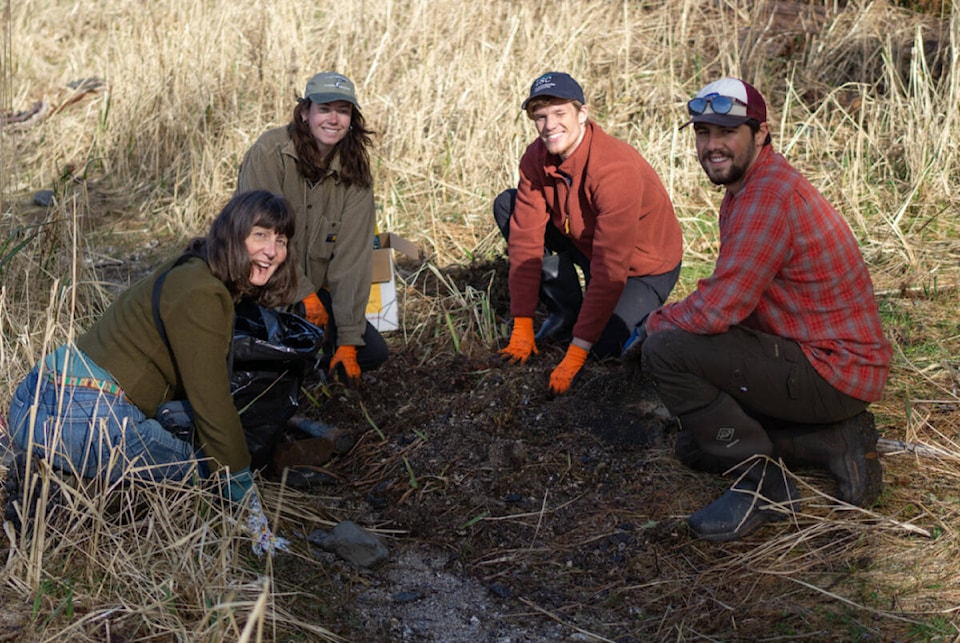BARB BEASLEY, JAMIE MACKAY AND MARA MCLAUGHIN
Special to the Westerly
If you’ve spent time at Big Beach in Ucluelet during the summer, no doubt you’ve noticed a newcomer to the plants growing in the meadows over the past few years. Yellow Flag Iris is a garden ornamental that looks like a yellow fleur-de-lis. It was introduced to North America from Eurasia and easily escapes into wild spaces. It thrives in wet habitats along the seashore and the edges of lakes and ponds. It thrives so much that it can out-compete native species and alter the ecology of our natural ecosystems. Local naturalists report seeing Yellow Flag Iris popping up in various places along the coast of Ucluelet and Tofino as well as within Pacific Rim National Park Reserve. Having seen other places where it takes over creates a worry that it could transform our beach ecosystems.
With the goal of nipping the problem in the bud, local organizations want to raise awareness about the issue and prevent further spread. It starts with what people plant in their gardens. The Invasive Species Council of BC suggests a few non-invasive alternatives to grow instead of Yellow Flag Iris. They include Blue Flag Iris, Bearded Iris, Japanese Water Iris, Oregon Iris and Siberian Iris. To learn more about these beautiful alternatives, visit bcinvasives.ca/invasives/yellow-flag-iris/.
The next most important step is to remove small patches of Yellow Flag Iris before they become bigger. In March, the Pacific Rim Youth Coordinator of the Invasive Species Council of BC (ISCBC) organized a workshop with participation by volunteers and representatives of the Association of Wetland Stewards for Clayoquot and Barkley Sounds (AWSCBS) and Redd Fish Restoration Society (REDD FISH). Within a few hours, we dug out the thick rhizomes of a small patch of Yellow Flag Iris at Big Beach. We realized there are other patches at Big Beach and we are currently developing a plan to tackle them with the help of volunteers later this spring. If you’re keen to be involved, keep an eye out for announcements from Redd Fish Restoration Society.
Meanwhile, if you come across a patch of Yellow Flag Iris, you can help control its spread in a few different ways. Report its location using the “Report Invasives App” (apps.apple.com/ca/app/report-invasives-bc/id1004208197). Wear gloves and long sleeves to protect your skin from the plant’s toxic chemicals and do some clipping and digging before the flowers go to seed. Be sure to remove all the fragments of the plant if you dig it out. Dispose of all the plant parts in a sealed plastic bag that goes to the landfill. It can be difficult to remove all of the thick rhizomes so monitoring for new shoots afterwards is essential. The most effective way to eradicate it quickly is to smother the plant with heavy rubber matting to exhaust its energy reserves. Read more about these removal techniques at bcinvasives.ca/wp-content/uploads/2021/01/Yellow-Flag-Iris.pdf
READ MORE: Extreme weather could help invasive green crab crawl along Vancouver Island
READ MORE: Tofino-Ucluelet region hops up to help frogs migrate under highway
READ MORE: Ucluelet gardener invades invasive species
